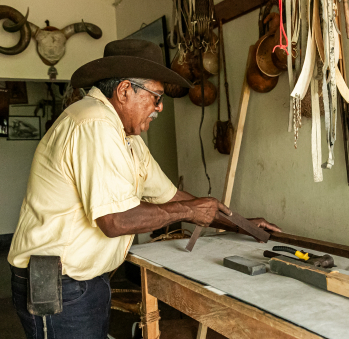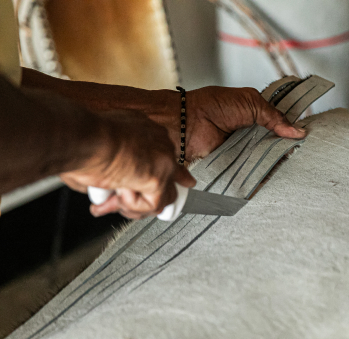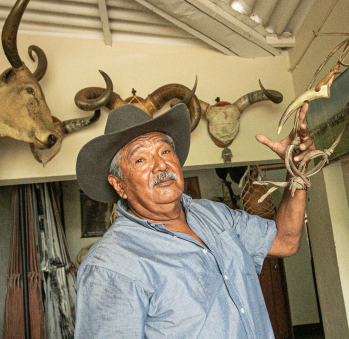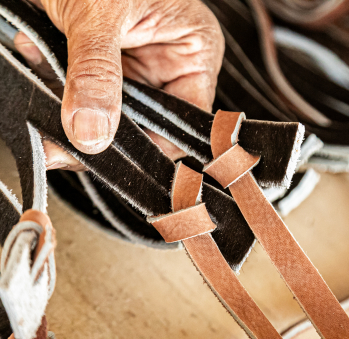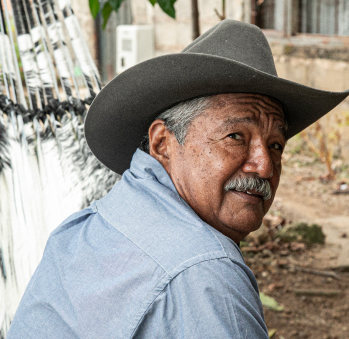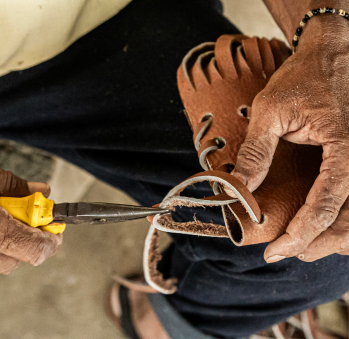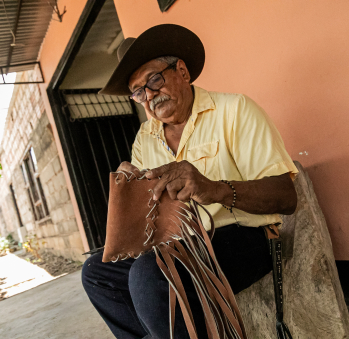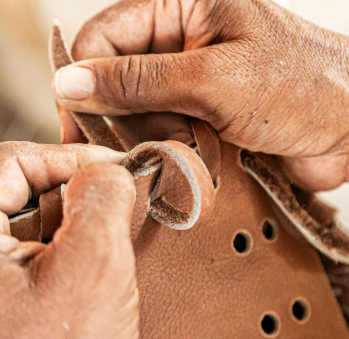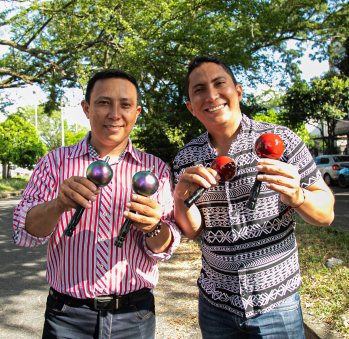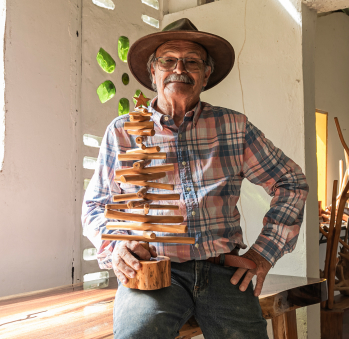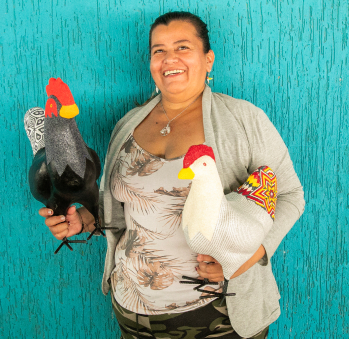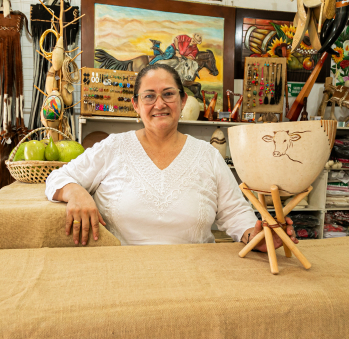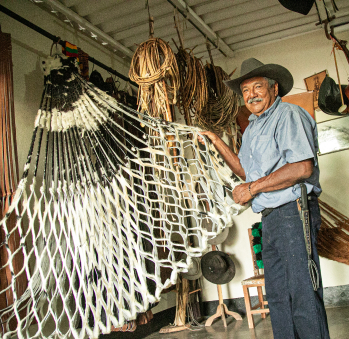Hermes Romero
When you speak with Hermes Romero, you are conversing with an institution of llanero culture. He has received the Medal for Artisanal Mastery and is a proud ambassador of his culture, which he carries in his heart and embodies in his body and hands. Not in vain, he was chosen in 2010 to share Colombia’s traditional wisdom at the Smithsonian Institute in Washington. He went as a representative craftsman of traditional campechana hammocks, as well as a player of the furruco instrument, and a singer. He was able to exhibit his deftness in contrapunteo, a verse battle typical of Casanare. For him, being llanero is a comprehensive lifestyle, based not only on the mastery of a craft but on a deep understanding of the need to use and keep traditions alive through experience.
He expresses the wisdom of a man who has lived. Being over sixty years old, this llanero man wakes up to the chirping of birds and the sounds of animals that break the silence of the night. He has a coffee before leaving his house and returns at 6 pm after spending the day doing cattle work: enlazar, colaear, and atajar. He works at milking cows, singing to cows, riding his horse, keeping an eye on the conucos (small parcels for growing produce), harvesting, trading what’s necessary, and taking care of everything—the fence, the animals, cleaning the cattle ranches, cornfields, and yucca fields. In fact, he wrote a song about his sentiments, which goes like this: “”One given afternoon there, in my Llano, under the summer’s sun, I started thinking about the life of a sabanero man, he who lives and enjoys and is happy to be llanero, and came to a conclusion and, today, I’ll shout out to the world that there isn’t a thing more beautiful than being born a llanero, and, although many don’t believe it, my Llano comes first.””
He’s a skilled leatherwork master, and through his work, he keeps alive the fashioning of traditional tools for cattle and horse work. He makes halters, head harnesses, reins, and bridles for riding horses, as well as whips and ropes for handling cattle. He fashions whips in the traditional way. When a cow is killed, usually for feeding the fundos or cattle ranch workers, its leather is stretched and tied to posts in the ground, left to dry for two to three days, and then damped, cut into even stripes, and braided. Hermes is known for cutting leather into perfectly straight stripes without using any rulers. The length of these crafts is measured in armfuls—for a rope to be a rope, it must be at least 20 armfuls long, which is equivalent to 30 to 35 meters, and for a whip to be a whip, it must be 7 armfuls long, measuring more or less 10 meters. Conversely, when crafting halters from leather and horsehair, he must treat the horsehair like wool—washing, drying, shearing, combing, selecting it, and spinning it to create an eight-guide weaving.
And if all these labor-consuming leather goods were not enough, Hermes is renowned for his campechanas, the llanero leather hammocks. It’s known that these already existed during the liberation campaigns from an old text mentioning that a group of spearmen gifted one to Simón Bolívar. Campechanas were used for comfortable sleeping during traverses. They were sleeping on the loin of an animal, protected by its size and warmth.
He learned how to craft them before turning 30, and since then, he has been delving into the technique. Even though they were once like the ones used in liberation campaigns, made from raw leather, known as criollas, whose leather became so tightened it had to be kneaded, the actual campechanas are made from chrome-tanned leathers, so soft that whoever lies on them will feel embraced. He spent years working and doing research, touring tanneries across the country, checking their provenances and good practices until he found the tannery he was looking for in Cogua, Santander. Its rhomboid design and distinct weaves give a sophisticated look to these pieces, in which a whole leather is combined with the breeziness of an open design.
So if you want to discover the proper way of sleeping in El Llano, it’s necessary to try one of Herme’s campechanas. You’ll probably get used to it and like it as much as the locals do.
Craft
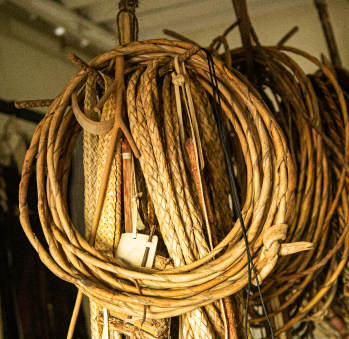

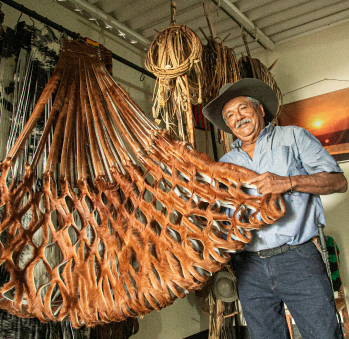
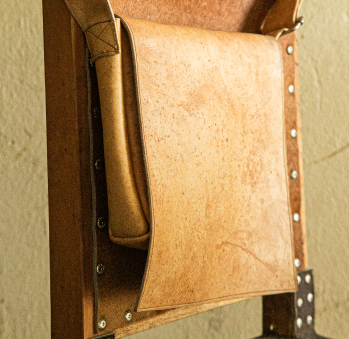
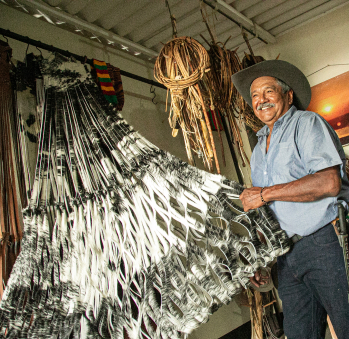
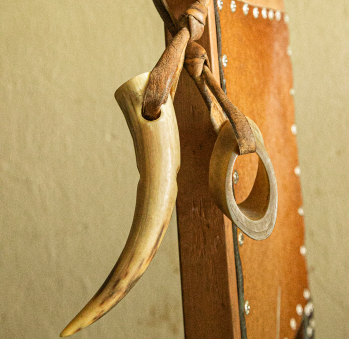

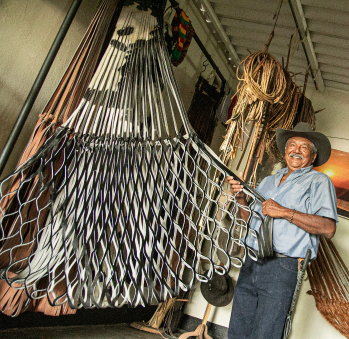










Artisans along the way
Artisans along the way
No puede copiar contenido de esta página









































